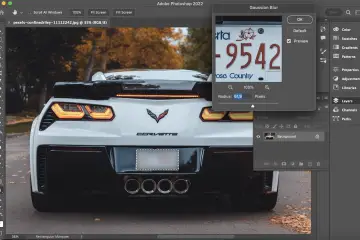Without her online marketing is hardly conceivable: stock photos are playing an increasingly important role in design. No wonder: They are quickly available, easy to use and often offer everything you need.
Nevertheless, there are a few things to consider when handling this. Because Stock photo is not the same as Stock Photo. There are big differences in quality and the right choice can have a huge impact on the public image of your company.
To ensure that your photos are always spot on, we give you six tips to help you choose. In line with the topic, we have included a small test in the article. Let’s see how you do on this…
What are stock photos?
The term stock photo comes from the English “to have in stock”, which means to have something in stock. These are pre-produced photographs that are distributed via agencies and platforms.
The photos are not made especially for clients, but without a clear order or a clear application, a goal is created. A wide variety of subjects are photographed. Companies like to use such platforms to fill various marketing formats (websites, print media, social media …) with high-quality image material.
Why do you use stock material?
There are different reasons to resort to stock photos:
- It’s easy
- It’s relatively cheap
- It saves effort
- There is a huge selection
- There is a certain quality standard
Especially when it’s all about supporting a suitable mood with pictures, stock photos can do their job effect well. As soon as you want to show a concrete product or a special application, such platforms logically reach their limits. For most areas of application, however, you are well equipped with stock photos.
Generally: Whenever you have the time and money to take photos yourself or hire someone to do so, you should take advantage of this opportunity. Because individual, high-quality image material always beats stock photos. Provided, of course, that the person taking the picture knows something about their job. If this option is not available, stock photos are a very good alternative.
Where you get stock photos from: the platforms
There are a wide variety of agencies and platforms on the Internet that specialize in providing stock photos. They differ in the abundance of images, the respective costs, the license conditions, and also in the quality. Basically, we differentiate between paid and free platforms.
Paid Platforms
The most well-known options are Shutterstock, Adobe Stock, or gettyimages. But there are also a number of smaller platforms that may be a good choice for you. When comparing different paid platforms for stock photos, it is important to pay attention to various factors:
- Value for money ratio
- Individual service packages for your needs
- Wide range of offers and versatility of the picture material
- Quality standards of the material
You can compare these points with each other. How to find the stock platform that’s right for you.
How much does a stock photo cost?
The question often arises as to what exactly a stock photo costs on such a platform. That cannot be answered in general. Because the prices for individual images vary depending on the quality, platform, and application. In addition, many platforms offer subscription models that simply include a certain number of downloads per month. You can only obtain information on the specific costs by researching the respective platforms.
Free alternatives
Of course, there are also free stock platforms. Popular is z. B. Unsplash or pixabay. Some of the paid platforms also offer a reduced selection for free use.
Of course, the money you save comes at a price: There is usually a much smaller selection of images and the quality control is often lower than on the paid platforms, where the photographers receive money for each download.
Logically, the image material is always thin when it comes to special applications. Of course, you will find more about people and nature than about a specific industrial application. So if you occupy a special topic, you will not be happy on free platforms.
Yet the free stock platforms can be found in many keep up well in the area. They are suitable as a supplement, for inspiration, or for smaller projects. So it’s worth taking a look there – even if you have already booked a paid version.
6 tips for choosing better photos
1. Don’t use stock photos
Okay, that’s a really dumb tip. But we just have to repeat it again: Whenever you have the opportunity to produce high-quality image material yourself or have it produced, you should seize this opportunity.
Because your own image material is better than stock photos because it exactly suits your company. Of course: High quality must be guaranteed. The smartphone snapshots of the boss are just as insufficient as the pictures of the trainee who is holding a reflex or system camera in his hand for the first time.
2. Pay attention to basic photo parameters
We are experiencing an unprecedented flood of images on the web. Young people can take photos with their smartphones as they pass, edit them with apps and filters, and put them online directly. And that with success and good quality.
What that means for you: As a company, you cannot afford to lag behind in quality. The demands on image quality, both with regard to pure resolution and to parameters such as post-processing and image composition, have increased significantly. It is therefore necessary that you pay attention to the basic key data of photography when selecting stock photos, such as e.g. E.g.:
- Correct Exposure
- Appealing image composition (e.g. according to the golden section or rule of thirds)
- Appealing contrasts
Appropriate color reproduction
- Sufficient resolution
- No converging lines
You can still influence some of these factors in post-processing. But if the composition is fundamentally wrong, you can no longer save the picture. So make sure when making your selection that the images meet a basic requirement for photography and post-processing.
3. Do you use images that match the message
Images just for the sake of the images? Of course, you can do it. But users will then ask themselves what you were thinking. Because images should never just be used to loosen up a text a little. You should always contribute something to the content.
One can do that visualized information, but also an appropriate mood or emotion. The function of images is diverse. But with the large selection on stock platforms, you quickly fall into the trap of choosing an image simply because you like it.
The actual use of the image is often included within the content but ignored. To avoid this, follow a simple rule of thumb: If the content works just as well without the image, then you picked the wrong image.
4. Rely on a uniform image mood
Many websites that are filled with stock photos quickly appear chaotic. There is a simple reason for this: during creation, care was not taken to ensure that the images have a uniform look. There is a lack of a clear design idea and the mood of the picture.
This is of course a danger that lurks on all stick platforms. Finally, the stock images for the search terms are displayed in a jumbled state. High-quality backlit shots with muted colors sit alongside gaudy commercial photography with monochromatic backgrounds.
To help you deal with this situation, it makes sense to Record rules for stock photos in your style guide. Depending on the situation, a small mood board can also help as a point of orientation.
An example: Imagine you run a business that produces a natural energy drink. It consists of 100% herbal ingredients and promises adventurers and athletes more performance. Now close your eyes for a moment and wait for the images to form in your mind. The things you probably see are athletic people who are fit and happy. People who explore nature and have adventures. Natural shades with lots of green and brown. Plants and untouched nature. A possible mood board could look like this:
You now use this mood and these ideas as a guide for all stock images that you select. And you already have a uniform look that appears to be of one piece despite the different stock photographers.
5. Note the image section on all end devices
If you use stock photos for your website, you must be sure to think of the different devices. Because depending on the screen size, the image section may shift. It all depends on how your website is programmed in terms of responsive design. Depending on the situation, you have to check the picture carefully to see whether it is being output properly on all end devices and whether the message is retained.
Even if you use it for other channels, you have to deal with the selection of the image section. Social media give e.g. For example, there are ideal image formats that you should take into account when making your selection. The square is very popular on Facebook & Instagram, among other things. However, if your desired image is in a super landscape format, much of it will be lost.
So check if the desired image works in all necessary formats. Paid platforms like Adobe Stock offer preview tools for this. However, experienced users can also manage with a sense of proportion
6. Be sure to follow the legal requirements
Each stock platform has its own regulation on how to legally deal with the images. Free platforms sometimes allow use without citing a source – but ask for a mention. Other platforms that sell stock images make references mandatory.
It makes a difference in which channel the images are used. On websites e.g. B. Often a list of sources in the imprint. However, if the images are used on social media, it may be necessary to enter the corresponding cross-reference directly on the image or in the text.
What legal regulations apply, depends individually on the respective pole platform. So that you use the images correctly, you should definitely inform yourself extensively beforehand and in case of doubt ask the platform. This is the only way to ensure the legally correct use of stock photos.
Improve your use of stock photos
Stock photos are a great way to easily get high-quality visuals. Whenever you lack the opportunity to create photos yourself, you are well advised here. If you follow our six tips when making your selection, you will also achieve results with ready-made image material that appear cohesive and of a piece – and never as if they were bought together at random. This contributes immensely to a successful public image!








